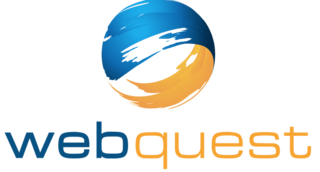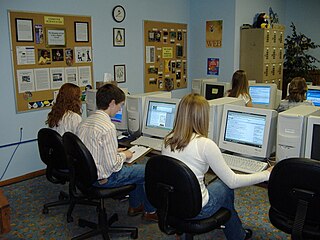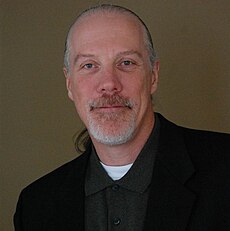Language education – the process and practice of teaching a second or foreign language – is primarily a branch of applied linguistics, but can be an interdisciplinary field. There are four main learning categories for language education: communicative competencies, proficiencies, cross-cultural experiences, and multiple literacies.
Computer-assisted language learning (CALL), known as computer-aided instruction (CAI) in British English and computer-aided language instruction (CALI) in American English, Levy briefly defines it as "the exploration and study of computer applications in language teaching and learning." CALL embraces a wide range of information and communications technology "applications and approaches to teaching and learning foreign languages, ranging from the traditional drill-and-practice programs that characterized CALL in the 1960s and 1970s to more recent manifestations of CALL, such as those utilized virtual learning environment and Web-based distance learning. It also extends to the use of corpora and concordancers, interactive whiteboards, computer-mediated communication (CMC), language learning in virtual worlds, and mobile-assisted language learning (MALL).
Situated learning is a theory that explains an individual's acquisition of professional skills and includes research on apprenticeship into how legitimate peripheral participation leads to membership in a community of practice. Situated learning "takes as its focus the relationship between learning and the social situation in which it occurs".
M-learning, or mobile learning, is a form of distance education or technology enhanced active learning where learners use portable devices such as mobile phones to learn anywhere and anytime. The portability that mobile devices provide allows for learning anywhere, hence the term "mobile" in "mobile learning." M-learning devices include computers, MP3 players, mobile phones, and tablets. M-learning can be an important part of informal learning.
Educational technology is the combined use of computer hardware, software, and educational theory and practice to facilitate learning. When referred to with its abbreviation, "EdTech", it often refers to the industry of companies that create educational technology. In EdTech Inc.: Selling, Automating and Globalizing Higher Education in the Digital Age, Tanner Mirrlees and Shahid Alvi (2019) argue "EdTech is no exception to industry ownership and market rules" and "define the EdTech industries as all the privately owned companies currently involved in the financing, production and distribution of commercial hardware, software, cultural goods, services and platforms for the educational market with the goal of turning a profit. Many of these companies are US-based and rapidly expanding into educational markets across North America, and increasingly growing all over the world."
Technology integration is defined as the use of technology to enhance and support the educational environment. Technology integration in the classroom can also support classroom instruction by creating opportunities for students to complete assignments on the computer rather than with normal pencil and paper. In a larger sense, technology integration can also refer to the use of an integration platform and application programming interface (API) in the management of a school, to integrate disparate SaaS applications, databases, and programs used by an educational institution so that their data can be shared in real-time across all systems on campus, thus supporting students' education by improving data quality and access for faculty and staff.
"Curriculum integration with the use of technology involves the infusion of technology as a tool to enhance the learning in a content area or multidisciplinary setting... Effective technology integration is achieved when students can select technology tools to help them obtain information on time, analyze and synthesize it, and present it professionally to an authentic audience. Technology should become an integral part of how the classroom functions—as accessible as all other classroom tools. The focus in each lesson or unit is the curriculum outcome, not the technology."
Podcasting refers to the creation and regular distribution of podcasts through the Internet. Podcasts, which can include audio, video, PDF, and ePub files, are subscribed to and downloaded through web syndication or streamed online to a computer or mobile device. Subscribers are then able to view, listen to, and transfer the episodes to a variety of media players, or podcatchers. Though similar to radio, there is no larger regulatory group or oversight with podcasts. Instead, podcasts simply consist of the creators and their listeners. As the technology gained popularity in the early 2000s, the uses of podcasting grew from simply the delivery of content to also creative and responsive purposes.
An edublog is a blog created for educational purposes. Edublogs archive and support [[dibu] and teacher learning by facilitating reflection, questioning by self and others, collaboration and by providing contexts for engaging in higher-order thinking. Edublogs proliferated when blogging architecture became more simplified and teachers perceived the instructional potential of blogs as an online resource. The use of blogs has become popular in education institutions including public schools and colleges. Blogs can be useful tools for sharing information and tips among co-workers, providing information for students, or keeping in contact with parents. Common examples include blogs written by or for teachers, blogs maintained for the purpose of classroom instruction, or blogs written about educational policy. Educators who blog are sometimes called edubloggers.
Authentic assessment is the measurement of "intellectual accomplishments that are worthwhile, significant, and meaningful" Authentic assessment can be devised by the teacher, or in collaboration with the student by engaging student voice. When applying authentic assessment to student learning and achievement, a teacher applies criteria related to “construction of knowledge, disciplined inquiry, and the value of achievement beyond the school.”
Mobile blogging is a method of publishing to a website or blog from a mobile phone or other handheld device. A moblog helps habitual bloggers to post write-ups directly from their phones even when on the move. Mobile blogging has been made possible by technological convergence, as bloggers have been able to write, record and upload different media all from a single, mobile device. At the height of its growth in 2006, mobile blogging experienced 70,000 blog creations a day and 29,100 blog posts an hour. Between 2006 and 2010, blogging among teens declined from 28% to 14%, while blogging among adults over 30 increased from 7% to 11%. However, the growing number of multi-platform blogging apps has increased mobile blogging popularity in recent years creating a brand new market that many celebrities, regular bloggers and specialists are utilizing to widen their social reach.
Science Leadership Academy is a magnet public high school in Philadelphia, Pennsylvania, which opened in September 2006. SLA is a partnership between The Franklin Institute and the School District of Philadelphia. SLA is also a 1:1 project-based laptop school where all students and teachers use laptops as their primary learning tool.

A WebQuest is an inquiry-oriented lesson format in which most or all the information that learners work with comes from the web. These can be created using various programs, including a simple word processing document that includes links to websites.
The Edublog Awards were an annual, community based programme which recognised and celebrated excellent practice in the use of web blogs and social media to facilitate education. Entries were accepted from any country, in any language, from educators working with any age group or type of learner, including learner led initiatives. Nominations opened within categories in November of each year, with the Awards event taking place in December following a community vote.
Visual literacy in education develops a student's visual literacy – their ability to comprehend, make meaning of, and communicate through visual means, usually in the form of images or multimedia.
Virtual worlds are playing an increasingly important role in education, especially in language learning. By March 2007 it was estimated that over 200 universities or academic institutions were involved in Second Life. Joe Miller, Linden Lab Vice President of Platform and Technology Development, claimed in 2009 that "Language learning is the most common education-based activity in Second Life". Many mainstream language institutes and private language schools are now using 3D virtual environments to support language learning.

Computers in the classroom include any digital technology used to enhance, supplement, or replace a traditional educational curriculum with computer science education. As computers have become more accessible, inexpensive, and powerful, the demand for this technology has increased, leading to more frequent use of computer resources within classes, and a decrease in the student-to-computer ratio within schools.

Edsby is an educational technology company headquartered in Toronto, Canada. It is the developer and publisher of the Edsby platform, a web-based K-12 learning management system (LMS) and analytics platform, and Unison, an educational data aggregation product.

David Warlick is an educator, author, programmer, and public speaker. An early adopter and promoter of technology in the classroom, Warlick has taught and written about technology integration and school curriculum for more than 30 years. He has also developed instructional software and interactive Web sites to support teachers and students in using computers and the Internet for education.
Data-driven instruction is an educational approach that relies on information to inform teaching and learning. The idea refers to a method teachers use to improve instruction by looking at the information they have about their students. It takes place within the classroom, compared to data-driven decision making. Data-driven instruction works on two levels. One, it provides teachers the ability to be more responsive to students’ needs, and two, it allows students to be in charge of their own learning. Data-driven instruction can be understood through examination of its history, how it is used in the classroom, its attributes, and examples from teachers using this process.




